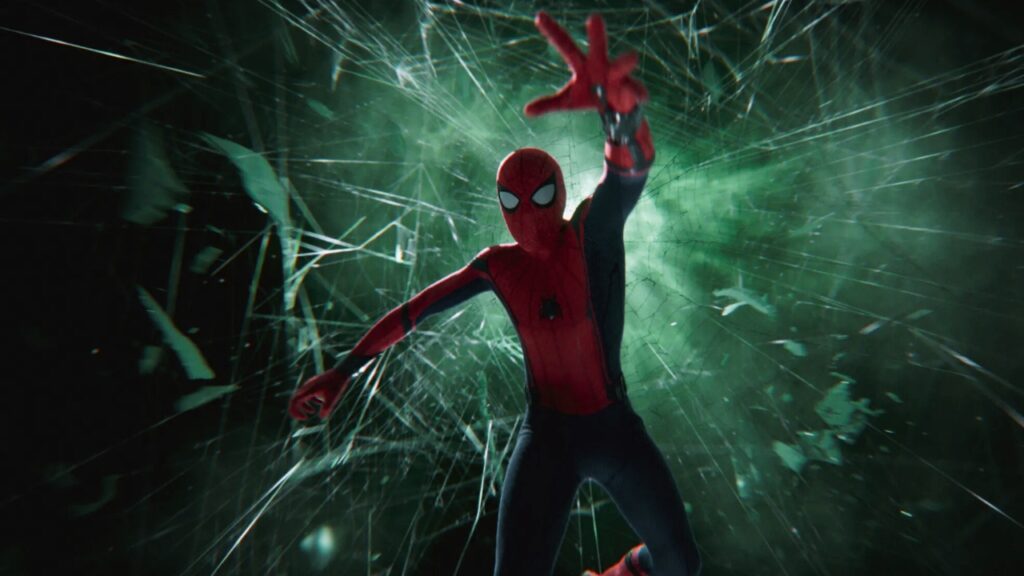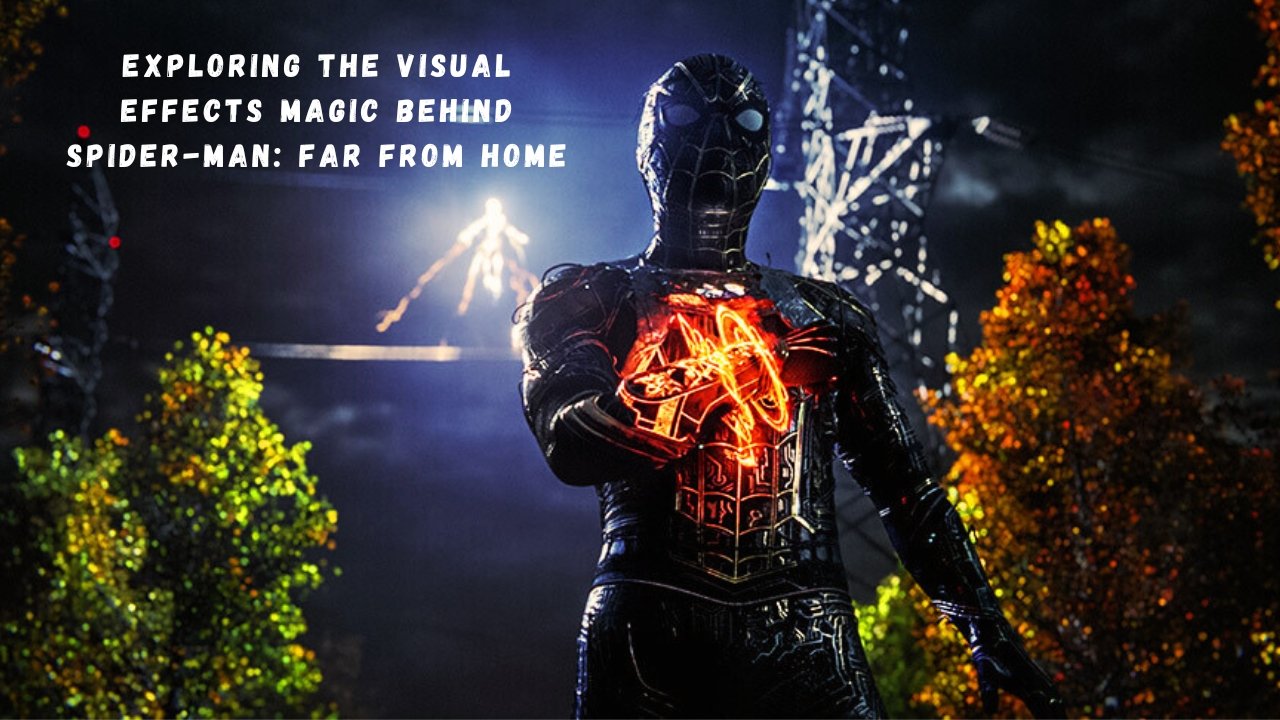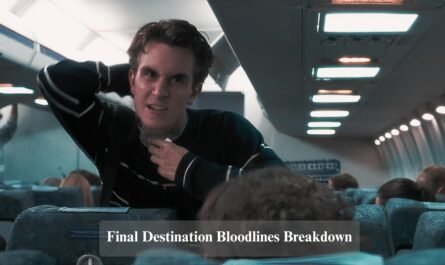As a 25-year-old boy who grew up watching superhero films and idolizing Spider-Man, there’s something magical about seeing your childhood hero evolve on the big screen. When Spider-Man: Far From Home was released, it wasn’t just a fun ride—it was a visual masterpiece. The way illusions, monster battles, and stunning locations were brought to life made me fall in love with filmmaking all over again. What stood out most? The visual effects (VFX). This film isn’t just action-packed; it’s a VFX showcase.
In this blog, I’m diving deep into the visual effects that powered Spider-Man: Far From Home, revealing the behind-the-scenes magic that helped shape one of Marvel’s most visually complex films. Whether you’re a casual fan or someone like me who rewatches the illusion scene over and over just to catch hidden details, you’re in for a treat.
1. Mysterio’s Illusions: Psychedelic VFX at Its Peak
Let’s be real. Mysterio stole the show—and not just because of Jake Gyllenhaal’s amazing performance, but because of those illusion sequences.
When Peter is tricked and thrown into that surreal trap, the visuals become a wild rollercoaster ride. Zombie Iron Man, shattered glass dimensions, a giant Mysterio—this was all computer-generated imagery (CGI) created by Framestore, one of the top VFX studios.
This single scene took months of planning, involving complex simulations, digital environments, and full character animation. What’s insane is that most of the sequence was pre-visualized before filming, meaning Tom Holland had to match his movements to a fully animated world. It’s called animation-driven storytelling, and it’s becoming a big deal in modern filmmaking.
This wasn’t just VFX for the sake of it—the illusions symbolized Peter’s internal struggle, making the effects emotionally powerful and narratively important.
2. Elemental Creatures: Monsters Made From Pixels
Remember those giant creatures—like the water monster in Venice or the fire demon in Prague? Those are the Elementals, and every single frame of them was crafted with advanced CGI.
Scanline VFX, known for their work on Aquaman and Game of Thrones, handled the water monster (Hydro-Man). They used fluid dynamics simulations to create thousands of individual water particles that react naturally to light, movement, and destruction. It’s why that scene feels so real—you’re seeing a monster, but also physics in motion.
The Molten Man, made of lava and metal, was equally complicated. Animators simulated flowing magma beneath cracked rocks using volumetric rendering techniques, making him look like a volcano that could walk.
Each Elemental took several terabytes of data just to simulate. It’s like building a monster from the ground up, frame by frame.
3. The Drone Army: High-Tech Villains Behind the Curtain

One of the coolest reveals in the film is that the Elementals were fake, created by hundreds of drones equipped with projectors and weapons. These drones were fully CGI, but designed with real-world military tech inspiration.
VFX teams created 3D drone models that followed physics-based animation. They fly, pivot, and attack just like real devices would. Even the damage and destruction caused by them—like buildings collapsing and vehicles exploding—was added digitally using compositing software like Nuke and Houdini.
What’s genius is how seamlessly the drones were inserted into real environments. When you watch the movie, you don’t feel like you’re looking at cartoons. The VFX blends beautifully with real-world footage, making the illusion believable to both Spider-Man and the audience.
4. Swinging Through Europe: A Dance of Practical Effects and CGI
Every Spider-Man movie needs epic swinging scenes, and Far From Home delivers. But here’s the twist—this time, Spider-Man is zipping through European cities instead of New York.
Many of the swinging sequences, especially across Venice and London, were done using a combination of:
- CGI doubles of Spider-Man
- Green screen background replacement
- Stunt performances on wire rigs
- Motion-controlled camera movements
The filmmakers used drone photography and 360-degree location scans of real cities. These scans were then used to build digital environments where the CGI Spider-Man could swing without limitations.
What I loved was how they made the swinging feel fresh and different. Instead of familiar skyscrapers, we saw ancient bridges, cathedrals, and castles—blended perfectly with Spider-Man’s modern action style.
5. Tower Bridge Battle: Building London in a Computer
The climax of Far From Home takes place on London’s Tower Bridge, and it’s chaotic, intense, and beautifully choreographed.
Believe it or not, most of that sequence was not filmed in London. The Tower Bridge and surrounding area were digitally recreated to give the filmmakers full control over lighting, explosions, and destruction.
Every drone, web, and explosion was animated using particle effects and physics simulations. Even Spider-Man’s acrobatics were often replaced with a digital version for smoother, more precise movement.
What makes this battle scene impressive isn’t just the explosions—it’s the clarity. Despite the chaos, you always know where Spider-Man is, what he’s doing, and what’s at stake. That’s smart VFX design.
6. The New Suit: A High-Tech Transformation in Mid-Air
In the middle of the film, Peter designs his new red-and-black suit aboard Happy Hogan’s jet. That scene, with floating holograms and 3D models, is another visual treat.
The suit transformation used augmented reality (AR) design influences, with digital layers showing how the fabric, tech, and weapon systems come together.
The moment when Peter jumps out in his new suit and takes down drones mid-air is one of the cleanest action sequences I’ve seen in any MCU movie. It blends:
- Real stunt work
- CGI environments
- Digital suit overlays
- Slow-motion and dynamic lighting
That scene alone probably took weeks of rendering time, but the result is epic.
7. Location Recreation: Fake Cities That Feel Real
Though the movie is set in Venice, Prague, Berlin, and London, a lot of scenes were filmed on soundstages in the UK using green screens and partial sets.
To recreate realistic cities, the VFX team used:
- HDRI photography for accurate lighting
- 3D city modeling
- Background compositing
- Matte painting for scenic details
The blending of real-world textures with digital environments makes it nearly impossible to tell where the real ends and the fake begins.
As someone who’s visited a couple of those European cities, I was impressed by how accurate everything looked. It just shows how powerful VFX can be when used correctly.
8. Hidden Details and VFX Easter Eggs
If you’re a Marvel fan like me, you know to look for Easter eggs, and Far From Home hides a few gems in the visuals:
- In the illusion scene, we briefly see the Chameleon’s mask in a pile of props.
- The fishbowl reflections in Mysterio’s helmet reference classic comic book panels.
- Some of the drones show internal code marked with “Stark_Industries_Weapon_X”, hinting at future tech-based villains.
These little VFX details are easy to miss but make rewatches so much more fun.
9. The VFX Studios Behind the Magic
A film like this needs a massive team. Some of the VFX powerhouses involved include:
- Framestore (Illusion sequences)
- Scanline VFX (Water and Elementals)
- Sony Pictures Imageworks
- Industrial Light & Magic (ILM)
Each studio had their own specialty, and their combined effort made Far From Home one of the most visually ambitious MCU movies to date.
Final Thoughts: Why VFX Makes This Movie a Marvel Milestone
As a lifelong Spider-Man fan and someone who’s fascinated by how movies are made, Far From Home blew me away. The visual effects aren’t just impressive—they’re purposeful. They tell the story, reflect Peter’s internal struggles, and expand the world of the MCU.
It’s easy to take VFX for granted, but once you understand the effort, skill, and imagination behind each frame, it gives you a whole new level of respect for these films.
If you’re someone who dreams of working in film, animation, or storytelling, take notes. Spider-Man: Far From Home is a masterclass in blending storytelling with cutting-edge technology.
Conclusion
Visual effects in modern superhero films are more than just spectacle—they’re tools for emotional storytelling, and Spider-Man: Far From Home proves that. Whether it’s Mysterio’s mind games, monstrous Elementals, or Spidey’s sleek web-swinging, each scene is a blend of human creativity and digital precision.
So next time you rewatch this epic Spidey adventure, keep an eye on the effects—they’re not just cool, they’re storytelling gold.
Thanks for reading! If you enjoyed this deep dive, make sure to explore my other VFX breakdowns and superhero movie blogs. More cinematic magic coming soon!
If you’re interested in reading more blogs like this, click here




